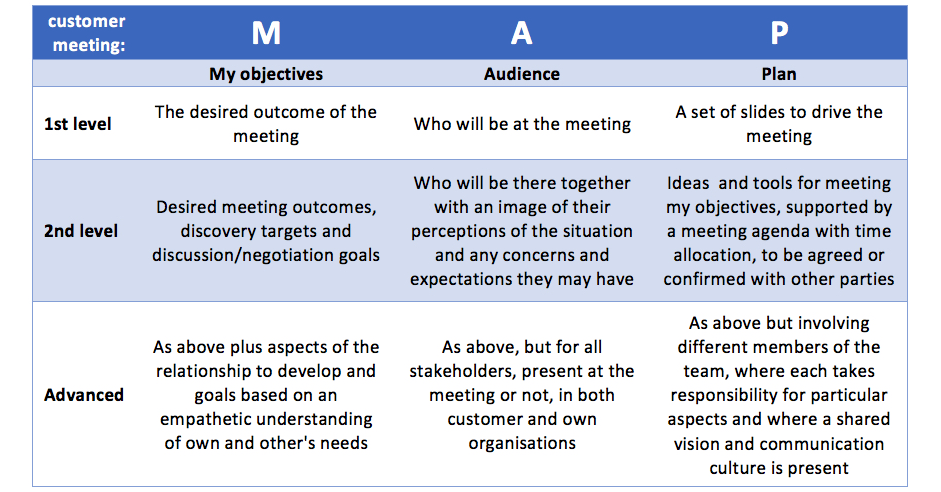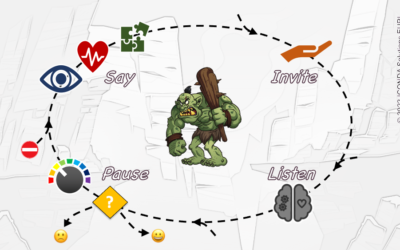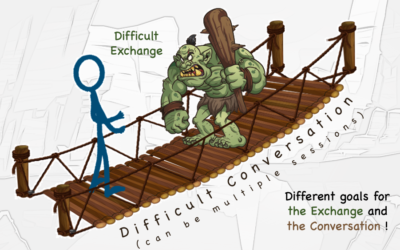Axcelis knows how to manage high energy with precision – its core business is the supply of ion implanters to the semiconductor industry. The company provides vital machines for the manufacturing process behind modern electronics. Axcelis certainly contributed to building the device with which you are reading these words!
The training program that we’ve launched together aims to harness a different kind of energy – the human kind – and apply it with precision to the challenging task of customer communication.
Thierry Josselin, Axcelis’s European General Manager who has co-facilitated a couple of training sessions with me recently, summed up the situation: “Customer communication is like a football match. Excellent planning is essential, even though it’s not possible to predict precisely the outcome of any particular interaction. And just like in football, we must keep up with our training and stay fit, working constantly on our customer-facing skills and our meeting preparation! All the energy involved in an interaction needs to be under the best possible control.”
In business, the equivalent of setting up a precision free-kick is preparing a meeting with MAP, a tool that helps you plan for any encounter and therefore make the most of the opportunities that it presents. And in theory, it’s even possible to apply MAP to football …
I’ve chosen to write a few words about MAP in order to illustrate our communication training, exemplified by the work with Axcelis. In this training, Field Service, Sales, Customer Support, Finance and Human Resource staff were simultaneously present. Their customer contact was direct and intense in some cases and indirect or less intense in others. Some were involved with pre-sales, some with post-sales and many with both. It was something of a mix!
MAP stands for My objectives, Audience, Plan and the great thing the tool is that it can be interpreted at different levels, as shown in the tables above (the football version should not be interpreted too seriously, though I do recommend it to the England team :-)). Also, the tool exhibits three properties that don’t often coexist:
· Simplicity – a 3-letter acronym
· Breadth – it can be applied in a wide range of circumstances
· Depth – one can dig down deep into each of the 3 aspects of MAP
A good illustration of MAP’s breadth came up in the Axcelis course. As you may imagine, it does not take too long to explain a three-letter acronym to a class. What is much more interesting, is working together on how the embodied principles apply in different circumstances and to different roles.
For example, the sales team already had a well-developed template which is used for important customer calls, especially when several people are involved on the Axcelis side. We showed that the principles embodied in MAP are already present in this template, though in a simpler form. Conclusion: while MAP helps with any customer-facing situation, the sales team should move to the existing template when the complexity of the situation requires it.
While this example had little direct appeal to non-sales people on the course, working on it was the trigger to seeing how the same principles could be applied to one-to-one customer calls, to internal meetings, to situations where a presentation is required, and many others. This means that the team now has a methodology that scales from straightforward situations involving a single person up to the most complex encounters, and that they can be confident of using it in any circumstances. The work also emphasises what different roles have in common, even as we work on how tools can be applied in specific cases.
On depth, the above table already gives an idea of how each of the MAP components can be progressively expanded, level by level. Another example of this is given in recent articles on Resisting Other People’s Problems, where a process is described for elaborating outcomes (i.e. digging deep into My objectives) and deciding on action (i.e. defining a Plan).
Just as we can always dig deeper, customer communication can always be improved.Through a few simple tools and the fundamentals that they embody, training can put teams in a position to become ever more excellent in communication, even if never quite perfect.
If you’d like to know more about Axcelis and ICONDA please visit our web pages. For other articles in this series, please look here.







